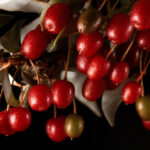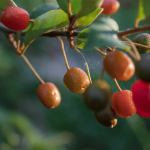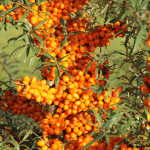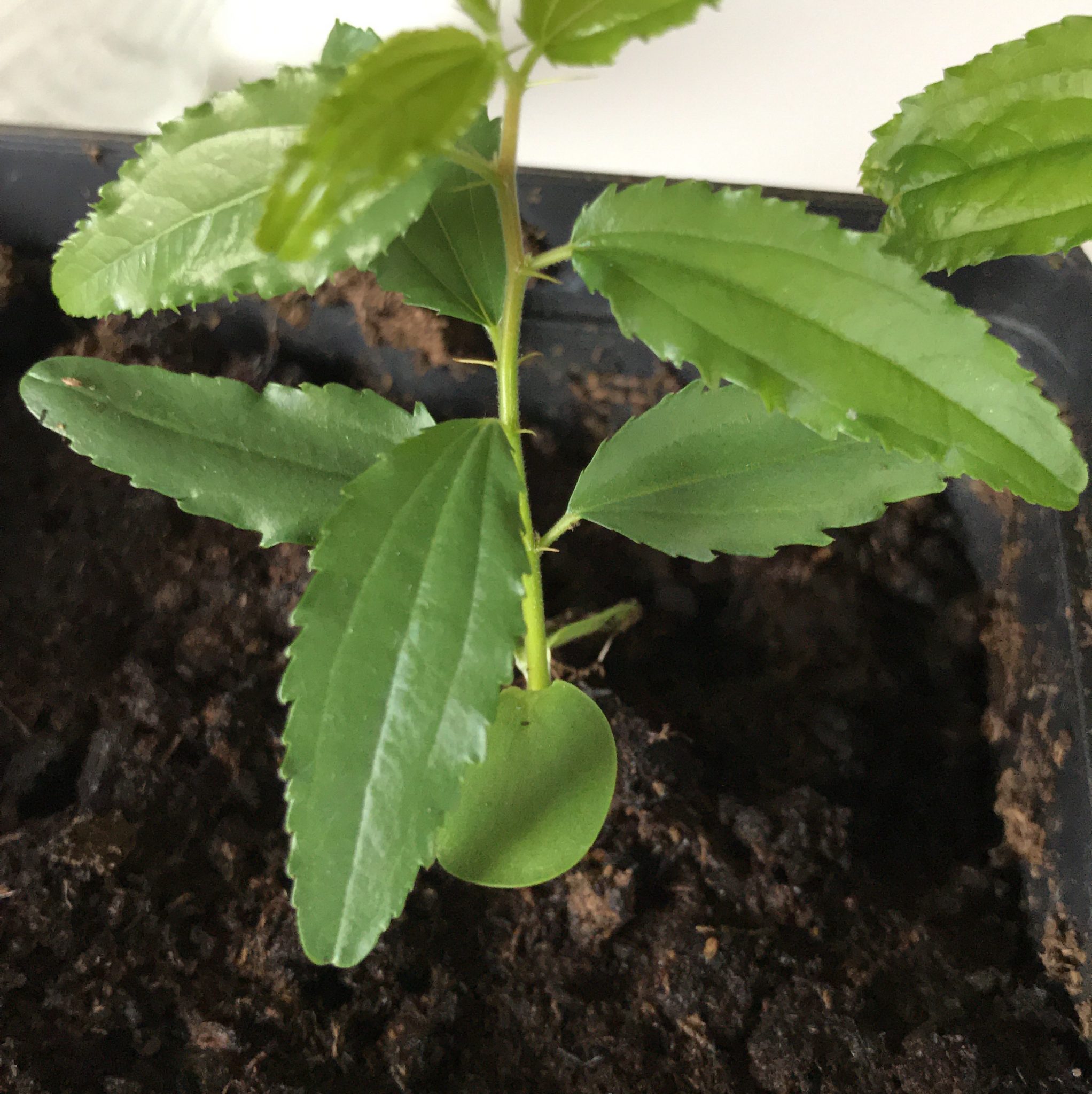A Berry Delicious Addition to Your Garden: Growing Goumi Berries in Scandinavia
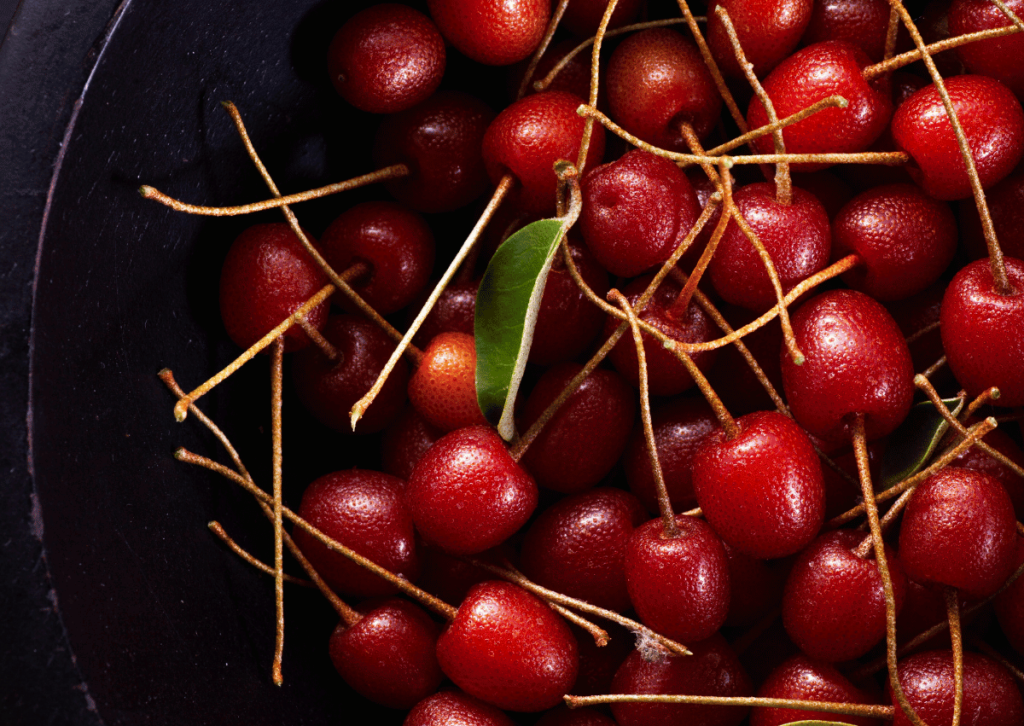
Introduction
A brief overview of Goumi Berry and its characteristics
Goumi Berry, also known as Eleagnus multiflora, is a highly valued crop that is not only grown for its sweet and juicy fruit but also for its versatility as a plant. This nitrogen-fixing berry plant is known for its ability to improve soil fertility, which makes it a valuable addition to any garden or farm. In this article, we will provide a comprehensive overview of Goumi Berry and its characteristics, including its ideal climate and soil conditions, planting and care instructions, and tips for harvesting and storage. We will also discuss some of the common pests and diseases that may affect Goumi Berry plants in Scandinavia and provide tips on how to manage them. Whether you are a farmer, gardener, or homesteader, you will find this information valuable in growing Goumi Berry in Scandinavia and enjoying its delicious fruits.
Goumi Berry seems to be well-suited for cultivation in Norway
Goumi Berry seems to be well-suited for cultivation in Norway due to its adaptability to a variety of climates and soil conditions. Goumi Berry is a hardy plant that can tolerate cold temperatures and short growing seasons, making it well-suited for the cooler climate of Norway. Additionally, Goumi Berry is tolerant of a range of soil types, including clay, sand, and loam, which is beneficial for Norway as it has diverse soil types.

Goumi Berry is a versatile and hardy crop that has several benefits for cultivation in Norway. Some of the main benefits include:
- Nitrogen-Fixing: Goumi Berry is a nitrogen-fixing plant, which helps to improve soil fertility for other plants growing nearby. This is particularly important for Norway, where the soil can be poor in certain areas.
- Low Maintenance: Goumi Berry requires minimal care and maintenance, making it a low-maintenance crop for farmers and gardeners.
- Perennial: Goumi Berry is a perennial plant, meaning it comes back year after year, reducing the need for replanting.
- Unique addition: Goumi Berry is not commonly grown in Norway, making it a unique and interesting addition to local agriculture.
Does not drop all the leaves in the wintertime in my area (Zone 7)
One important aspect to note is that Goumi Berry is known for its hardiness, which makes it well-suited for cultivation in areas with colder climates such as Norway. In my experience, my Goumi plants don’t even drop their leaves completely during the winter in my area, despite temperatures dropping below -15 Celsius. This is a testament to the hardiness of Goumi Berry, as it can withstand harsh winter conditions and continue to survive. This hardiness is an important consideration for those growing Goumi Berry in Norway, as it means that the plants are less likely to be damaged or killed by cold temperatures. Additionally, because Goumi Berry is a perennial plant, it will come back year after year, even after surviving harsh winters. This makes it a reliable and long-term crop for farmers, gardeners, and homesteaders in Norway.
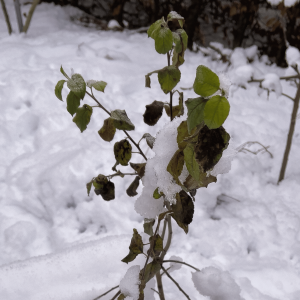
It’s important to note that Goumi Berry’s hardiness doesn’t mean that it doesn’t require any protection during the winter. While it can survive cold temperatures, a heavy snowfall or frost can damage the branches. Furthermore, a good mulch layer can help insulate the root system and keep the ground from freezing. Also, if you have young plants or have just planted it, it’s recommended to protect them during the winter by covering them with a frost blanket or burlap. All in all, Goumi Berry’s hardiness is a valuable trait for cultivation in Norway, but it’s important to understand that it still requires some protection during the winter months.
From Seed to Harvest: My Journey Growing Goumi Berries
I chose to try growing Goumi berries for several reasons. Firstly, it’s a perennial plant, which means it comes back year after year, making it a low-maintenance addition to my garden. Secondly, it’s a nitrogen fixation plant, which means it helps to improve the soil for other plants growing nearby. Additionally, it’s a plant that provides food in the form of sweet and tangy berries, making it a valuable addition to my edible garden. Another factor that drew me to Goumi berries is that they are not commonly grown in my area, and I wanted to see if I could successfully grow them from seed. It was an exciting challenge and I couldn’t wait to see the fruits of my labor.
Climate and soil requirements
The Goumi Berry plant is hardy and can survive in a wide range of temperatures and climates. It is suitable for cultivation in USDA hardiness zones 4 to 9, which includes much of the United States, including parts of the northeast, mid-Atlantic, southeast, Midwest, and western regions. The plant is capable of surviving temperatures as low as -20°F (-29°C), making it suitable for areas with colder winters. This makes Goumi Berry a great option for gardeners and farmers in regions with temperate to subtropical climates and moderate to cold winters.
Check your USDA zone here (even quite a few non-US countries)
Description of the ideal climate and soil conditions for Goumi Berry
The ideal climate for growing Goumi Berry (Elaeagnus multiflora) includes temperate to subtropical regions with a moderate to warm summer and a mild to cool winter.
Climate: Goumi Berry is tolerant of a wide range of temperatures and can survive in quite harsh cold climates. Goumi berries are hardy to USDA zones 4-9 and can survive temperatures as low as -20°F (-29°C). They do prefer a moderate climate with mild winters and cool summers. Goumi Berries can grow in full sun or partial shade, but it will produce more fruit when grown in full sun.
Soil: Goumi Berry is tolerant of a wide range of soil types, including clay, sand, and loam. It prefers well-draining soil that is rich in organic matter. Goumi Berries can grow in soil that is slightly acidic to slightly alkaline, with a prefered pH range of 6.3 to 6.8. It can also tolerate poor soil conditions.
Water: Goumi Berry is drought tolerant but requires regular watering during the first season of growth to establish a healthy root system. Once established, it is relatively drought-tolerant.
Fertility: Goumi Berry is a nitrogen-fixing plant and can improve soil fertility for other plants growing nearby. It is not particularly demanding in terms of fertilizer needs, but can benefit from an application of a balanced fertilizer in spring or a side-dressing of compost or aged manure.
Overall, Goumi Berry is a hardy and adaptable plant that can grow in a variety of conditions, making it well-suited for cultivation in many regions. However, to ensure optimal growth and fruit production, it is best to provide it with well-draining soil that is rich in organic matter, and full sun exposure.
How to adjust for variations in climate and soil conditions for Goumi Berry
Growing Goumi Berry in a region with a different climate or soil type than it is naturally adapted to may present challenges. However, with proper adjustments, it is possible to successfully cultivate the plant in a wide range of environments.
To adjust for variations in climate, it is important to choose a location that offers adequate protection from strong winds and heavy rain, as well as providing sufficient sunlight for the plant to thrive. In areas with hot summers, it is important to provide shade during the hottest parts of the day to prevent heat stress. If the winters in your area are colder than the plant’s natural hardiness range, consider planting it in a sheltered location or covering it with a protective layer of mulch.
Soil conditions also play a crucial role in the success of Goumi Berry cultivation. The plant prefers well-drained, slightly acidic soils with a pH range of 6.3 to 6.8 If your soil is heavy or poorly drained, consider amending it with organic matter to improve its structure. The plant is also capable of tolerating a wide range of soil types, including sand, loam, and clay. If the soil in your area is lacking in nutrients, consider adding a balanced fertilizer to support healthy growth.
In summary, Goumi Berry can be grown in a wide range of climates and soil types, but it is important to make adjustments to accommodate any variations in your local conditions. With proper care, the plant can provide a nutritious, low-maintenance crop for farmers, gardeners, and homesteaders.
Planting and care
Step-by-step instructions for planting Goumi Berry in Scandinavia
- Choose the right location: Goumi Berry plants prefer full sun or partial shade, with well-draining soil. If you are planting in heavy clay soil, consider amending it with organic matter to improve drainage.
- Prepare the soil: Dig a hole that is twice the width of the root ball and just as deep. Mix organic matter, such as compost or well-rotted manure, into the soil that you removed from the hole. This will improve soil fertility and provide the plants with the nutrients they need to establish.
- Plant the seedlings: Place the seedlings in the hole and make sure that the top of the root ball is level with the soil surface. Fill the hole with the amended soil and firm it down around the seedling to eliminate any air pockets.
- Water the seedlings: Water the seedlings thoroughly after planting to help settle the soil around the roots. Keep the soil moist, but not waterlogged, until the seedlings are established.
- Mulch the soil: Apply a layer of mulch, such as straw or wood chips, around the base of the seedlings to conserve moisture and suppress weeds.
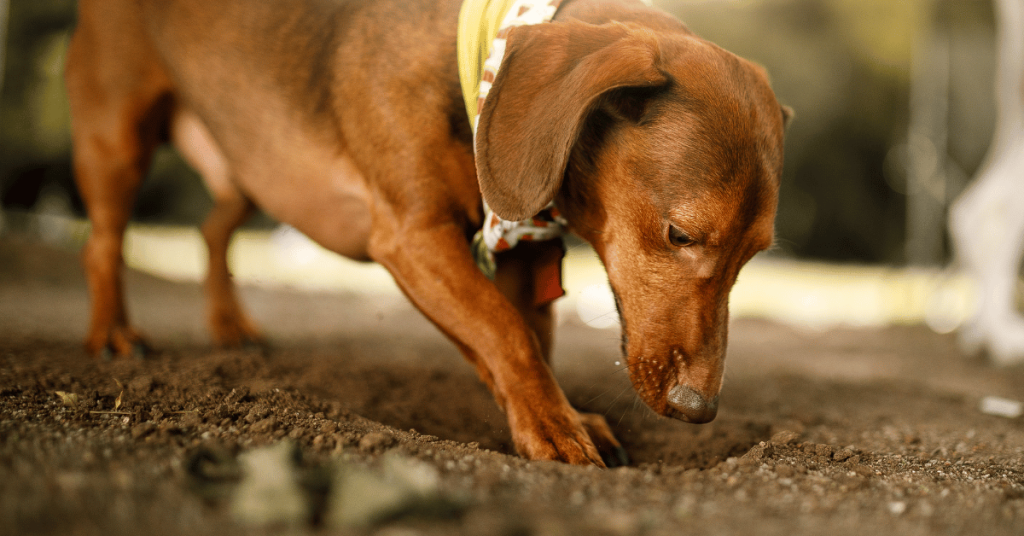
Get expert help to dig if needed 🙂
By following these simple steps, you can ensure that your Goumi Berry plants get off to a great start and establish well in your garden.
Information on how to care for Goumi Berry plants, including watering, fertilizing, and pruning
To properly care for Goumi Berry plants, it is important to provide adequate water, fertilize regularly, and prune when necessary.
- Watering: Goumi Berry plants prefer consistently moist soil, but not waterlogged. During the first growing season, it is important to water the plant frequently to ensure the soil stays moist. During the establishment phase, watering once a week should suffice, but make sure to adjust accordingly depending on the climate and soil conditions. Once the plant is established, it will be more drought tolerant, but it is still important to provide enough water to keep the soil consistently moist.
- Fertilizing: Goumi Berry plants are nitrogen-fixing plants, so they naturally improve soil fertility. However, they may still benefit from occasional fertilization, especially in areas with poor soil quality. A slow-release balanced fertilizer applied in early spring and mid-summer is recommended.
- Pruning: Goumi Berry plants may benefit from pruning to control size and encourage bushier growth. Pruning should be done in late winter or early spring before new growth begins. Remove any damaged or diseased wood, and cut back any branches that are crossing or growing too long. Pruning also helps to maintain an open center, allowing for better air circulation and sun exposure.
In conclusion, Goumi Berry plants are low-maintenance, but proper care is still necessary to ensure healthy growth and abundant fruit production. Regular watering, fertilizing, and pruning will help keep your plants thriving.
“Are Goumi Berries Invasive?
Goumi berries, a species of the Elaeagnus family, are not considered invasive in the United States, and in Norway where I live it’s not even listed as a species on the site that tracks information about biodiversity in Norway (plantevernleksikonet.no). So, as far as where I live at least, I’d say that the Goumi is not invasive.
Pest and disease management
Overview of common pests and diseases that can affect Goumi Berry plants in Scandinavia
Goumi berries (Eleagnus multiflora) are known for their resilience to pests and diseases. As Goumi berry plants are not native nor naturalized in Scandinavia, there is a lesser chance of encountering specific pests or diseases that target Goumi berries. However, it is still important to be aware of common pests and diseases that can affect other plants in the area.
Fortunately, Goumi berry plants have natural predators such as ladybugs and parasitic wasps that can provide control. Additionally, common pests such as aphids can be easily controlled by simply spraying water on the affected plants. With proper care, including proper watering and fertilization, Goumi berry plants can remain healthy and robust, making them a low-maintenance crop for farmers and gardeners.
Harvesting and storage
Information on when and how to harvest Goumi Berry in Scandinavia
Goumi berries are typically ready to be harvested in late summer or early fall. The best way to determine if the berries are ready is to taste test a few. They should be sweet, juicy, and slightly tart. It is important to harvest the berries when they are fully ripe to ensure the best flavor and nutritional value. The berries can be harvested by gently shaking the branches and collecting the fallen berries, or by handpicking the ripe berries from the bush.
It is best to harvest the berries on a dry day as wet berries are more susceptible to spoilage.
Tips for storing and preserving Goumi Berries
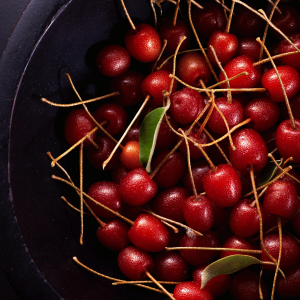
Goumi berries can be stored in several ways to extend their shelf life. They can be frozen for long-term storage or refrigerated for shorter-term storage. When freezing, it is best to spread the berries out on a cookie sheet and place them in the freezer. Once frozen, the berries can be transferred to an airtight container or freezer bag for storage.
Another option is to make preserves, such as jams or syrups, with the Goumi berries. These can be stored in the pantry or refrigerator and used throughout the year.
For those who do not have the time or resources to process the berries, they can be stored in the refrigerator for a few days. It is important to store the berries in an airtight container or plastic bag to prevent spoilage. Before storing, it is recommended to remove any stems, leaves, or unripe berries to extend the shelf life of the ripe berries.
Conclusion
In conclusion, Goumi Berry (Eleagnus multiflora) is a valuable crop to consider for farmers, gardeners, and homesteaders in Scandinavia. These hardy plants are suitable for growing in USDA zones 4-9 and can survive temperatures as low as -20°F (-29°C). To ensure their optimal growth, it’s important to plant Goumi Berries in well-draining soil that is rich in organic matter and to provide them with adequate water and nutrients. Minimal care and maintenance are required for Goumi Berry plants, making them a low-maintenance crop for those in Scandinavia.
Summary of key points and tips for growing Goumi Berry in Scandinavia
Goumi Berries are generally not bothered by pests or diseases and natural predators can provide control. To harvest Goumi Berries, it’s best to wait until they are fully ripe, which usually occurs in mid to late summer. The berries can be stored in the refrigerator for up to two weeks or preserved for longer use.
Encouragement to try growing Goumi Berry in Scandinavia and enjoy their sweet fruits.
In summary, Goumi Berry is a hardy, low-maintenance crop that is well-suited for cultivation in Scandinavia. It provides numerous benefits, including soil fertility improvement and year-round growth. So why not give it a try and enjoy the sweet fruit of your labor!

